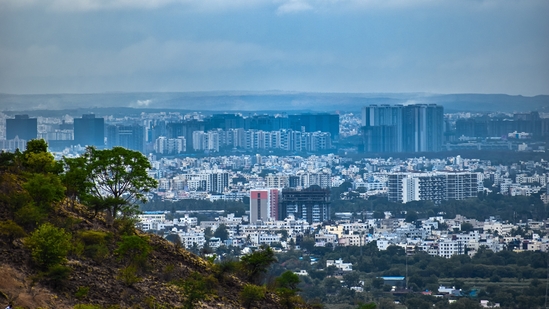CJI starts process to remove HC judge Varma, writes to Prez, PM
CJI Sanjiv Khanna seeks removal of justice Yashwant Varma over cash recovery allegations, marking a potential first in constitutional court history.
Chief Justice of India (CJI) Sanjiv Khanna on Thursday initiated the process for the removal of sitting high court judge, justice Yashwant Varma, by writing to the President of India Draupadi Murmu and Prime Minister Narendra Modi stating that the allegations of recovery of cash at the judge’s residence is serious and warrants initiation of proceedings for his removal under the Constitution. If Varma is removed, he will the first judge of a constitutional court to be.

On May 5, a three-member in-house enquiry committee submitted its report to the CJI confirming that cash was indeed found at the residence of justice Varma, then a sitting Delhi high court judge. This cash was kept in a storeroom where a fire broke out March 14, following which fire service officials and police, engaged in dousing the flames, discovered half-burnt currency notes stacked in a sack. The police even recorded a video of the cash .
The committee’s findings were forwarded by the CJI to justice Varma for his response. In his covering letter, the CJI pointed out that justice Varma has the option to resign from office or seek voluntary retirement. Justice Varma is currently a judge of the Allahabad high court and on the CJI’s instruction, no judicial work is being assigned to him.
A press release issued on Thursday by the Supreme Court confirmed that justice Varma filed his response on May 6 . HT learns that in his response, he has stuck to his earlier position denying recovery of cash and refusing to step down.
Prior to the setting up of the committee, the CJI had asked Delhi high court chief justice to conduct an enquiry and seek the response of justice Varma. Then too, Varma had denied recovery of any cash and alleged the entire incident was a “conspiracy” against him.
The press release issued by the top court said, “Chief Justice of India, in terms of the In-House Procedure, has written to the President of India and the Prime Minister of India enclosing therewith copy of the three -member Committee report dated May 3, 2025 along with the letter/response dated May 6, 2025 received from justice Yashwant Varma.”
The CJI has so far followed the rulebook of the In-House Procedure dealing with complaints against sitting high court judges. This procedure which serves as the document to proceed on complaints against sitting high court and Supreme Court judges, was framed by a five-judge committee and adopted by the full court of the Supreme Court on December 15, 1999.
In thepresent case, the CJI on March 22 formed an in-house committee comprising Punjab and Haryana high court Chief Justice Sheel Nagu, Himachal Pradesh high court Chief Justice G.S. Sandhawalia, and Karnataka high court judge, justice Anu Sivaraman, after a preliminary enquiry by Delhi high court Chief Justice DK Upadhyay said that the matter warrants a “deeper probe”.
Under the Constitution, a judge can be removed only on the grounds of “proved misbehaviour” or “incapacity”, on an order passed by the President. But prior to this, the President seeks the opinion of the CJI following which a motion of removal is initiated in either House of the Parliament which must be passed by a majority of “not less than two-third of the members of the House present and voting”. Article 124(4) provides this procedure for Supreme Court judges and Article 217(1) read with Article 124(4), for high court judges. Till date, no judge of the Supreme Court or high courts has been removed in this manner.
The preliminary probe followed by setting up of the in-house inquiry committee is provided in the In-House Procedure. The three-member committee, which is a fact-finding committee, found the allegations of recovery of cash from the judge’s house to be true. On May 6, after CJI Khanna received the response of justice Varma, the In-House Procedure gives him three options.
On finding substance that the allegations disclose misconduct against the judge, the CJI may simply advise the judge to resign or seek voluntary retirement. Alternatively, if the CJI finds that the charges are not so serious warranting his removal, he may advise the judge concerned and close the matter by taking the three-member panel report on record.
There is a third option which CJI Khanna has resorted to in the present case. The In-House Procedure states, “In case the judge expresses his unwillingness to resign or seek voluntary retirement, the Chief Justice of the concerned high court should be advised by the CJI not to allocate any judicial work to the judge concerned and the President of India and the PM shall be intimated that this has been done because allegations against the judge had been found by the committee to be so serious as to warrant the initiation of proceedings for removal of the judge and the copy of the report of the committee may be enclosed.”





